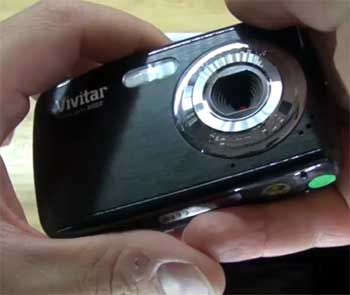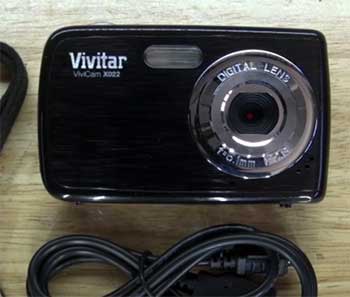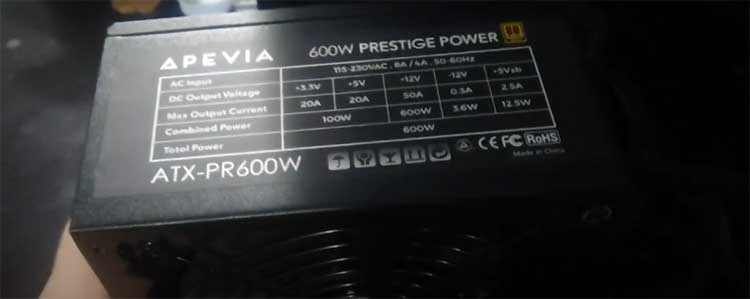When you’re looking for a new digital camera, it’s easy to be attracted to the Vivitar brand. With a tempting price tag and features like HD video recording, an 8x optical zoom, and vintage shooting modes, it seems like a good deal.
But as someone who’s tested and read countless user reviews, I want to give you a complete picture of what this product is really like—warts and all. Let me break down why Vivitar digital cameras might or might not be the right fit for you.
My Experience Using The Vivitar Digital Camera
I have to say, my experience with the Vivitar digital camera was a mixed bag, leaning more towards disappointment. Initially, I was excited to give it a go—after all, the price point was attractive, and I liked the idea of having a compact camera with a few creative modes.

But after using it for a few weeks, my enthusiasm started to fade.
The first issue I ran into was the battery.
I made sure to charge it fully before taking it out, but the battery died within just 20 minutes during an outdoor event.
It was incredibly frustrating, especially since I had planned to capture some nice moments that day.
The second issue was with the image quality.
The pictures were consistently blurry, even in good lighting conditions. I tried adjusting settings, but nothing seemed to help.
The final straw for me was when the camera wouldn’t recognize the SD card—a card that worked perfectly fine in my other devices. I was left with a camera that wouldn’t take pictures, wouldn’t store photos, and wouldn’t hold a charge long enough to be useful.
Ultimately, I ended up setting it aside and switching back to my phone, which honestly took far better pictures with much less hassle.
Pros And Cons of Vivitar Digital Camera
The Pros: What Works
When talking about the Vivitar digital camera, there are a few bright spots that I have to acknowledge. After all, there’s a reason it’s been attracting buyers, especially at its lower price point.

- Affordable: For many people, the biggest draw of the Vivitar digital camera is the price. It’s significantly less expensive compared to other brands offering similar features. If you’re not ready to invest in a high-end digital camera, Vivitar might appear to be a cost-effective solution.
- Basic Features for Casual Users: If you’re someone who’s not looking for anything too sophisticated—just a simple point-and-shoot experience—then Vivitar might have what you need. It features a 2.7-inch LCD display, HD video recording, and built-in flash. It’s really designed for anyone who wants a straightforward camera without all the fuss.
- Vintage Modes for Creative Shots: The creative shooting modes are a nice touch. I’ll admit, it was pretty fun playing around with the black & white, sepia, and a couple of other quirky filters that the camera offers. It’s a creative addition that can add a little flavor to your snapshots.
- Compact and Portable: One aspect that most of us look for in a digital camera is portability. Vivitar scores points here. It’s compact enough to easily fit in your pocket or bag, making it a practical option for capturing quick moments on the go.
The Cons: The Disappointments
However, the downsides are substantial, and this is where my personal experience (and the experiences of countless others) takes a bit of a sour turn.
- Quality Control Issues: One of the most glaring issues with Vivitar digital cameras is the inconsistent quality. I’ve seen reports (and even experienced myself) where the camera broke within just a few weeks. It’s frustrating when you’ve set your heart on capturing some memories only to end up dealing with a product that doesn’t last.
- Poor Image Quality: The clarity of photos is simply not up to par. While Vivitar boasts an 8x optical zoom and HD recording, the picture quality is quite disappointing. The images often come out grainy, blurry, or underwhelming compared to what you’d expect from a modern digital camera. Even with adequate lighting, the sharpness isn’t there, and low-light conditions make it worse.
- Battery Life Struggles: Oh, the battery life. One major complaint—and I have to agree with other reviewers here—is that the battery just doesn’t hold up. Imagine being at a wedding or a birthday party, excited to capture those precious moments, and the camera dies in just 15 minutes. You end up missing out, and it feels like such a letdown.
- Faulty Operation: The operational experience is, quite frankly, frustrating. You expect a camera to be reliable in taking pictures—but Vivitar’s camera seems to decide when it wants to work. At times, it took me multiple attempts to get it to capture a picture. The autofocus would sometimes fail, and the flash was entirely unreliable. There were even instances where the camera didn’t recognize an SD card that worked fine in other devices.
- Customer Support: I think good customer support can often turn things around for a disappointing product. But unfortunately, Vivitar hasn’t nailed that either. When I reached out for help, the response was lackluster, and based on many reviews, others have faced the same unhelpful experience. It’s a shame, considering how much a responsive support team can do to redeem a product.
How It Stacks Up Against Other Brands?
It’s important to compare the Vivitar camera to other options on the market. After all, making an informed choice means understanding what else is available.
- Vivitar Vs. Canon Powershot
The Canon Powershot is one of Vivitar’s main competitors in the budget digital camera range. In terms of reliability, Canon just runs circles around Vivitar.
The Powershot series is known for consistent performance, clearer pictures, and user-friendly controls. Yes, you’ll be paying a bit more for Canon, but it’s worth every extra penny. Unlike Vivitar, Canon gives you confidence that when you press that shutter button, you’ll get a decent shot.
- Vivitar Vs. Nikon Coolpix
Similarly, the Nikon Coolpix line is another step up from Vivitar. Nikon has been in the camera game for a long time, and it shows. The Coolpix cameras come with image stabilization, which greatly enhances the sharpness of pictures. Vivitar doesn’t even come close.
The Nikon also offers better low-light performance, while the Vivitar is almost unusable unless conditions are perfect.
- Vivitar Vs. Sony Cyber-shot
Compared to the Sony Cyber-shot, Vivitar feels outdated. The Cyber-shot’s autofocus is precise and responsive, and the image quality is far superior. Additionally, Sony’s cameras have much better battery performance, allowing you to shoot for extended periods without anxiety about power running out.
In all these comparisons, Vivitar comes up short. If you’re considering investing in a camera, putting just a little more money into a more reputable brand will save you frustration down the line.
Tips For Maintaining Your Vivitar Digital Camera
If you do decide to go with the Vivitar digital camera, it’s important to maintain it properly. The better you care for it, the longer it might last (fingers crossed). Here are some tips for keeping it in good shape:

- Handle With Care: Given the reports of quality control issues, I recommend treating the Vivitar with a lot of caution. Try not to drop it or be rough with it, as it doesn’t seem to be built to withstand any tough conditions.
- Charge Properly: Be sure to charge the USB rechargeable battery fully before using it. Also, avoid overcharging it, as that can further degrade battery life.
- Use a Protective Case: I found that buying a simple protective case is helpful for extending the life of this camera. The build is plastic and feels quite fragile, so adding an extra layer of protection helps reduce the risk of physical damage.
- Check for SD Card Compatibility: Many people (myself included) have faced issues with the camera not recognizing the SD card. It’s a good idea to make sure you’re using a compatible SD card and to format it properly before use. However, even then, this remains a persistent problem.
- Clean Regularly: Keep the lens clean by using a microfiber cloth to gently wipe away smudges and dust. A clean lens is key to getting the best picture quality possible—especially since Vivitar struggles with clarity as it is.
Frequently Asked Questions (FAQ)
Vivitar is an affordable brand, but when it comes to quality, they’re often lacking. The cameras are very basic, and while they’re budget-friendly, the quality control issues and frequent malfunctions make them a challenging option to recommend.
No, the Vivitar digital camera does not come with an SD card. You’ll need to purchase one separately to store your photos and videos.
Vivitar products are made by Sakar International, a company known for producing budget electronics and accessories. The products are designed to be affordable, but often this comes at the cost of reliability and quality.
Old digital cameras can be worth it if they come from reputable brands and are still in good condition. Cameras from brands like Canon, Nikon, or Sony hold up better over time compared to budget options like Vivitar. A well-maintained older model from a trusted brand will generally provide better performance than a low-cost new camera.
My Final Take: Worth The Buy?
If I’m honest, I wouldn’t recommend the Vivitar digital camera. Sure, it’s tempting because it’s affordable, but in this case, you really do get what you pay for. The poor picture quality, unreliable battery life, and questionable build quality make it a tough sell.
There are better options available at just a slightly higher price point, and those alternatives—like the Canon Powershot or Nikon Coolpix—offer a much more satisfying experience.
Photography is all about capturing memories, and you want a tool you can rely on for that. With Vivitar, I found myself constantly frustrated rather than enjoying the process.
If budget is a constraint, I’d suggest even considering a second-hand camera from a more reputable brand rather than settling for the Vivitar.
